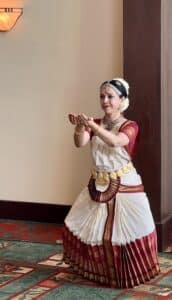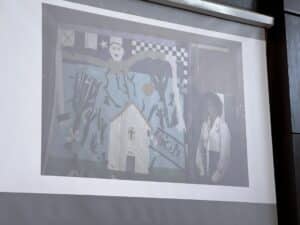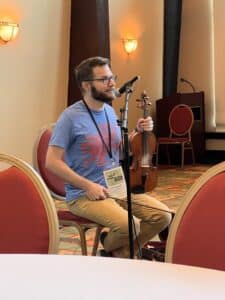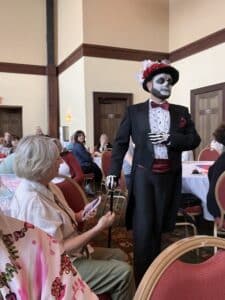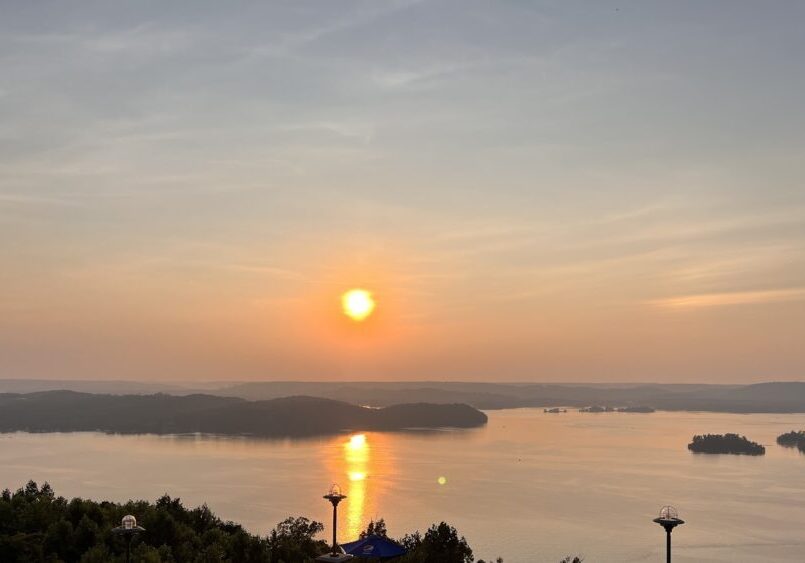
I attended the Folklife in the South Conference in Lake Guntersville, Alabama in June 2023. It was a gathering of community leaders, folklorists, traditional artists, educators, documentarians, and other cultural workers. We came together to hear the stories of work in the field, explore different avenues of folklife in the South and to meet and mingle with like minded people.
The three days were full of opportunities, presentations, stunning views, and the arts. I took notes at the sessions I attended and will attempt to recap for you now.
Alabama Textile Traditions
This panel of women spoke to Alabama’s long history of women working within both the formal and informal economies to provide for their families through sewing.
Fiber arts have long been a source of creativity, a declaration of self-determination, and a cornerstone of care.
Bib and Tucker Sew op
https://bibandtuckersewop.org/
This business is unique not only in teaching the fiber arts, but being advocates for the industry and women. Recycled Runway is a program for Birmingham Middle and High School students. Their fashion show was in April, all items made from repurposed materials.
The March Quilts began in 2015 to commemorate the march from Selma to Montgomery marches. They decided to repeat it each year. Members choose a civil or human rights theme and facilitate open sewing sessions and discussion.
Viola Ratcliff, program manager, 205-386-0575 viola@bibandtuckersewop.org
Black Belt Treasures Arts and Culture
https://www.blackbelttreasures.com/
This is a nonprofit business in Camden, AL. They began in order to stimulate the economy with heritage arts and culture. They represent over 450 different artists.
One of the things I loved to see was the rehabilitation of an old car dealership where they now hold their classes. It’s a fabulous idea. There are many empty car dealerships in small towns, this is a great way to use the space.
Loretta Bennet
https://www.facebook.com/lorettapbennett/
Loretta is an artist who said, “I was quilting before I was born.” She’s one of the quilters of Gee’s Bend. The quilts of Gee’s Bend are internationally renowned hand-made quilts made by a group of women and their ancestors who have lived in the isolated African-American community of Gee’s Bend, Alabama. The residents of Gee’s Bend are direct descendants of enslaved people who worked the cotton plantations of Joseph Gee established in 1816. The quilting tradition in Gee’s Bend goes back beyond the 19th century and some of the quilts have been exhibited at many notable museums.
Loretta shared that she is a participant in Vacation with An Artist Program. (www.vawaa.com) You can spend a week with her and sister and they teach the old methods. She shared they do quite a bit of work using old clothes from deceased people to make quilts in remembrance.
Takeaways from the panel:
- Art, hands on textile art, is important to tourism, there are bus tours from all over the world that come for quilt tours.
- Creation of this art and turning it into economic development benefits from the Idea Friendly Method.
- Storytelling is done in many different methods. Quilting is one of those. There are barn quilts with tours in the Midwest, quilt shops that created an entire town in Missouri and it started from a youtube site that simply gave instruction.
- Creating, quilting, is a good way to bring people together around a common theme. What else can be accomplished at these gatherings?
Small steps for work as a textile artist:
- Find fabric
- Donated clothing and fabric
- Work with the culture arts center
- Sell on Etsy
- Work together
- Packing/shipping together
- Funds from vacation with an artist
Discuss your prices for handmade items:
- Labor
- Time
- Materials
- Love
Remember, it’s art. Price accordingly!
Foodways in Alabama
Sponsored by the Southern Foodways Alliance, this panel features Sarah Rodriguez, Southern Foodways Alliance’s lead oral historian, in conversation with three women who teach, preserve, and document diverse and changing foodways in Alabama.
Southern Foodways Alliance
A major theme at this conference was the importance of telling the stories of folklife in the South. Southern Foodways Alliance is capturing the stories. They are exploring the oral traditions and finding ways we are sharing our food stories. Visit their website, Southernfoodways.org and check out the videos.
Jai Williams, Southern Foodways Alliance
Jai specializes in culinary, travel, and cultural photography and was recently named as a Nathalie Dupree Fellow for the Southern Foodways Alliance (SFA.) She’s studying Black land ownership and cultural foodways throughout the South as well as documenting Mississippi’s rich history through visual media.
Again, the theme of telling the stories arises. Another way to do that is through photography.
Contact: Jaithephotog.com @iamjaithephotog
Lauren Murphy, seed saver, Hillfolk Pharmacy
Lauren is a young farmer and a seed saver. She realized while raising her special needs son that there had to be a better way to feed him. Food is medicine after all. She noticed that the seeds she had from the past were not as badly affected by the drought. gut-healing herbalist, soil-steward and traditional foods enthusiast trained in Southern Folk Medicine by Phyllis Light at the Appalachian Center for Natural Health, and in Sociology from Florida State University.
Lauren is a natural teacher and storyteller. You can listen to her on this Native Habitat Podcast session.
Hillfolkfarmacy.com (and Instagram account)
Lauren Richards, Albertville High School Culinary Arts Program
Lauren shared about how her culinary school kids discussed traditions in food, then created fusion meals. They didn’t know that the old rules say you can’t do that. It’s exciting to see what our youth are creating while using the old traditions. Just another way to tell a story!
https://www.facebook.com/ahsculinarydepartment/
Takeaways from the panel:
- Food is medicine.
- Food is another avenue to storytelling.
- ‘If we don’t eat, we don’t meat’ rings true.
- Food allows us to be daring, to try new (and old) things.
- Food is a safe place to gather, and to learn our stories.
A quick thank you and good bye to Bill Mansfield
Bill Mansfield, NEA leader National Endowment for the Arts is retiring. He told us he welcomes calls now through end of July for touching base and answering questions.
They gave out 28.8 million in 1,231 grants last year, many to Native Arts and culture. Bill said no one is perfect but keep trying. “I don’t master the work; I master the tools.”.
One of the stories he shared was how Charleston, WV triangle district was wiped out by highways. It was once the center of black music and culture. In 1974 the area was demolished. Thousands were forced to move, because of underlying racism.
Sadly, this is not a singular story. Black Wall Street in Tulsa was the site of a massacre, white on black, and they rebuilt. Then the highways were placed into that area and Black Wall Street was gone. San Francisco neighborhoods in the 1960’s were seized with imminent domain and razed, affecting at least 20,000 people. This federally funded urban renewal movement was not just in big cities either. Greenville, NC, Tupelo, MS, Demopolis, AL were all affected. Read more in this article in the Boston Review.
Bill, may you enjoy retirement and keep on being creative!
Folklife and the Future
Alabama artists and activists Sehoy Thrower, Mary Godfrey, and Susan Walker engaged in conversation around how their present work is shaped by a dynamic vision of their community’s future.
Sehoy Thrower, Poarch Band of Creek Indians
Sehoy spoke of how the Creek were moved out of their homelands. “Our diaspora got changed, against our will.”
They used the native plants and are trying to bring them back. It’s hard to be optimistic when you look at their land. Biodiversity is plummeting. Rivercane is gone, invasive species bamboo overtook it
Folklife traditions are the thread that never ended
Creek are a people of fire, inner and outer. Creeks have one foot in the past and one in the future.
Mary Godfrey, Lowndes County Community Life Center
Lowndes County worked on the quilt project. They asked, ‘who are your people?’
Mary shared that in the quilting environment “only love [is] there.” Winnie McQueen said in a video “your name will never be forgotten.”
It’s not meant to harm; it is meant to heal, the telling of the stories. Quilters often sing when they sew.
“Happiness is very fleeting – joy lasts.”
Susan Walker, Sew Their Names Project
She restored a church from 1843, that her grandfather owned – along with the slaves. The Sew Their Names Project added the names of the slaves to the quilt they did. It was hard to find the names of slaves, sometimes just used numbers
Susan said, “Can’t have reconciliation without the truth.”
When you view the quilt, look at the left side– it’s happy white people. Then look at the right side – all slavery images.
A traveling exhibit of this quilt is coming and with songs. Then will be permanently displayed in Lowndes County.
Takeaways from this panel:
- Will we ever learn? The treatment of the natives and the slaves was horrendous. What can we do going forward to rectify this?
- You can’t have reconciliation without the truth. It begins with telling and hearing the stories.
- We must take care of our Earth. We simply must, before we can’t.
Panayotis League, fiddler
Panayotis is from Tarpon Springs in Florida, and a Greek. He told of the Greek sponge divers and merchants from the Aegean islands who came to Tarpon Springs FL in 1906.
He shared songs on his fiddle. The melodies are associated with place, Kalimos and Kos. In Mobile AL were the Greeks from Crete. In New Orleans the Greek community were in the New World around 1760
“When my old people started dying was when I woke up to how amazing this music was” Panayotis said.
Takeaway from Panayotis:
- After he was done with his session, he went with a young man to a lobby area. He proceeded to teach him how to play his fiddle in the way of the location. In other words, he took a bluegrass song and played it like a Greek song. He was patient, kind, happy to be teaching.
- He’s not just a fabulous musician, but a storyteller, a teacher and makes one love music even more.
- The stories matter.
Real Meaning of Dia de Muretos
Mónica S. Sánchez, from the Cazateatro Bilingual Theatre Group led this workshop. The Day of the Dead is a celebration of life.
“Music and food make everything better.”
Monica had set up an elaborate altar. The Altar is set up in 7 levels, and she shared what goes on each level.
Takeaway from Monica:
- Her excitement as a theater person was engaging. Where else can we be that excited in our lives?
- It’s important to honor the dead, in the way each of us does in our traditions.
- It’s all about remembering the people and the stories.
Appleshop Short Film Stories
Ethan Payne frightenedmedia.com
He directed the Appleshop films we previewed. I was busy watching the films, and feeling just like I was back in Jackson County, KY. Here’s the description from the agenda:
Appalshop recently completed four short films documenting regional Appalachian traditional artists. This series captures, archives, and amplifies the stories behind the craft. Our focus was in the following mediums: traditional music, storytelling, crafts, woodworking, and foodways. Appalshop’s documentary work has from the beginning told authentic stories of Appalachia, working from within the community to banish stereotypes and misrepresentations. The short films in this series are:
Bright Morning Stars: The Johnsons of Hemphill
That Tree Lives On: A Film About Terry Ratliff
Lady D
Full of Wonder: The Art of Angie DeBord
Takeaway from the films:
- It’s never too late to make a difference.
- You are never too young to belong and do things.
- The stories matter.
Music
I recorded a little bit from the performers I saw.
Greek Fiddle
Bluegrass
The Gary Waldrep Band performed an hour of traditional bluegrass music. Gary Waldrep, the founder, is from Kilpatrick, Alabama. He has participated in the Alabama State Council on the Arts apprenticeship program and touring arts program.
The Blues
For years, blues artists have not only performed the traditional art of African American Roots music but also utilized the methods of folklorists to preserve and share the Blues People’s narrative. This panel features Alabama’s traditional Blues artists who have participated in apprenticeships, created nonprofit organizations, and more to ensure preservation.
- Jock Webb
- DieDra Hurdle-Ruff
- Keithen Ruff
Follow FITS partners on social media and visit the websites for updates:
- South Arts
- com/southarts
- Instagram: @southartstradarts and @southartsorg
- Twitter: @southarts
- Alabama Folklife Association
- com/AlabamaFolklife
- Instagram: @alabamafolklife
- Twitter: @AlabamaFolklife
- Alabama State Council on the Arts
- com/AlabamaStateCouncilontheArts
- Instagram: @alabama_arts
- Twitter: @Alabama_Arts
- American Folklore Society
- com/AmericanFolkloreSociety
- Instagram: @americanfolkloresociety
- Twitter: @afsfolklorists
Join the next gathering 2023 American Folklore Society Annual Meeting, November 1-4, in Portland, Oregon.
- Indian Dancing
- The quilt (sorry for bad lighting)
- Panayotis
- Day of the Dead

